Laser Tattoo Removal in United States
Search and Compare the Best Clinics and Doctors at the Lowest Prices for Laser Tattoo Removal in United States
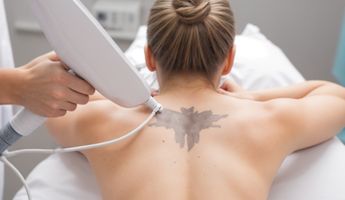
Find the best clinics for Laser Tattoo Removal in United States
No pricing info available
Vietnam offers the best prices Worldwide
Price: $ 3
From 114 verified reviews
Jesse Lee D, 22 September 2020
Center Aesthetic is not only gorgeous and CLEAN, but everyone is so friendly and they do the best work in town. I can not recommend them enough. Nurse Lynn knows how to rejuvenate the face without ever looking “done”
From 137 verified reviews
Aline Corrales, 19 September 2020
Best experience ever! Dr. Kevin and his team made this journey very smooth for me. I love my results and how fast I’m healing. I would absolutely recommend him !!!
From 16 verified reviews
Andrea Vogel, 30 August 2020
Dr. O'Toole is an incredibly talented surgeon. If you want to look amazing but not admit to anything, he's your doctor! The office staff is wonderful as well.
From 15 verified reviews
Patricia Varga Leadership, 17 March 2020
Dr. Max is one of the most outstanding surgeons and doctors you will ever meet and work with. Highly trained, highly skilled, an artist when it comes to aesthetics!For years before meeting Dr. Max, I heard from many people how wonderful he is - as a doctor and a human being. His staff take their q's from him and are also highly competent, very considerate and kind. Flexible too. If something comes up, they do not penalize you for being late to an appointment or having to cancel. Bernice in Dr. Max's Pasadena office is outstanding ... she understands all procedures, knows the pricing structure inside and out and is the keep of the schedule for Dr. Lehfeldt.Patricia V.
From 58 verified reviews
Dan Creed, 21 September 2020
Very good entry for virus control procedures felt comfortable the entire time plus great care from assistants and physician
Dr. Michael Schwartz, located in Pasadena, Los Angeles, United States offers patients Laser Tattoo Removal procedures among its total of 38 available procedures, across 3 different specialties. Currently, there's no pricing information for Laser Tattoo Removal procedures at Dr. Michael Schwartz, as all prices are available on request only. All procedures and treatments are undertaken by the lead specialist at the Clinic, and they are not accredited by any recognized accreditations institutes
Chicago Aesthetic Surgery Institute, located in O'Hare, Chicago, United States offers patients Laser Tattoo Removal procedures among its total of 49 available procedures, across 4 different specialties. Currently, there's no pricing information for Laser Tattoo Removal procedures at Chicago Aesthetic Surgery Institute, as all prices are available on request only. All procedures and treatments are undertaken by just a small team of specialists, with 2 in total at the Clinic, and they are accredited by The American Society for Aesthetic Plastic Surgery
- Home
- United States
Compare Before & After Photos of _procedure_photos.phpLaser Tattoo Removal
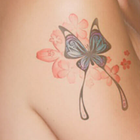
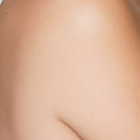
Front view
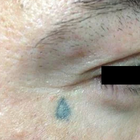
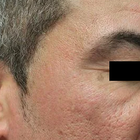
Half-side view
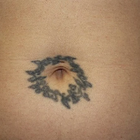

Front view
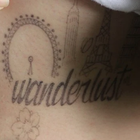
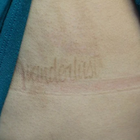
Front view
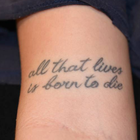
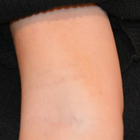
Front view

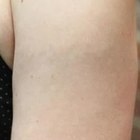
Full-side view
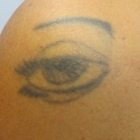
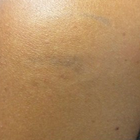
Front view
WHY US?
At Medijump, we're making medical easy. You can search, compare, discuss, and book your medical all in one place. We open the door to the best medical providers worldwide, saving you time and energy along the way, and it's all for FREE, no hidden fees, and no price markups guaranteed. So what are you waiting for?

Free

Best Price

Widest Selection

Risk-Free
What you need to know about Laser Tattoo Removal in United States
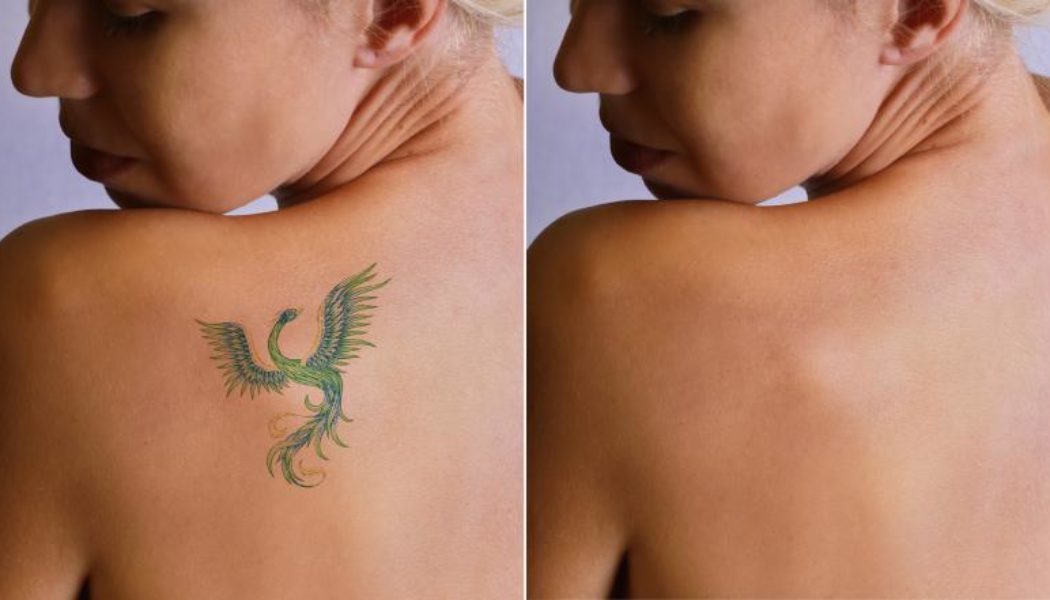
Laser tattoo removal is a technique to eliminate an unwanted tattoo with little to no side effects. It works by breaking up the pigment colors with a high-intensity light beam. You can undergo a laser tattoo removal if you regret having a tattoo, unhappy with the appearance of your tattoo, the tattoo causes infection, or you have an allergic reaction to the tattoo. Once you've done laser tattoo removal, your unwanted tattoo will be gone forever.
Grasping the notion that Laser Tattoo Removal is not a one-off activity, but instead encompasses an array of treatments distributed over multiple weeks, is crucial. Variables like the dimensions, hue, tattoo positioning, along with the person's general well-being determine the count of requisite sessions.
What is the cost of Laser Tattoo Removal in United States?
In United States, the Laser Tattoo Removal cost can greatly fluctuate. It hinges upon several considerations such as the size, emplacement, tattoo color, and the amount of needed therapy sessions. Other influencing factors are the laser technology utilized and the reputation of the clinic.
The majority of clinics in United States extend payment schemes and financing aids to render the process more financially manageable. Bear in mind, though, that Laser Tattoo Removal isn't typically included in medical insurance coverage as it's deemed a beauty-related procedure. Irrespective of the expenditure, it is vital to give precedence to first-rate care and the proficiency of the healthcare staff over cost-effectiveness.
What does a Laser Tattoo Removal Procedure Involve?
The process of Laser Tattoo Removal entails directing particular wavelengths of laser light on the tattooed part of the skin. A highly specialized laser is chosen depending on the colors present in the tattoo for carrying out this technique. The light pulses penetrate the skin's topmost layers to reach the tattoo's pigment. This energy from the light leads to the fragmentation of the tattoo ink into minute particles, which are gradually flushed out by the body's immunity system.
Most people do not need anesthesia, but you can ask for a topical or local anesthetic from your doctor. During the procedure, you will have to wear protective eye shields. Then, your doctor or technician uses a laser to bring pulses of intense light to the top layers of your skin and only the tattoo pigment will absorb this light. Depending on the size, color(s), and age of your tattoo, you might need more than one treatment session.
How Long Should You Stay in United States?
You can leave United States after your tattoo removal procedure. However, it may take several treatments to completely remove the tattoo. Given that everyone reacts distinctively, the process might necessitate anywhere from 3 to 10 visits. The interval between each treatment is around 7 weeks to allow the treated area enough time to heal. You are free to retreat to your home, or a place of your choosing, in between these sessions. This sequence persists until your tattoo is completely removed. Nevertheless, it is critical to resume your journey to United States for each forthcoming Laser Tattoo Removal.
What's the Recovery Time Like?
You will feel pain and discomfort for around a week, but your skin will completely heal in around six weeks. You should be able to go to work as long as you do not feel any pain or discomfort that interferes with your life.
Right after every session, you may observe minor swelling and a reddish tint on the manipulated area. These indications normally wane within a short span that can range from a few hours to two days and can be tamed with chilled packs and popularly accessible pain relievers. Evading exposure to sunlight and demanding activities in the initial few days is of utmost importance to forestall probative issues.
What sort of Aftercare is Required for Laser Tattoo Removal Procedures in United States?
Your doctor will give you aftercare instructions; make sure to follow the instructions. Keep the treated area clean, do not soak the area, and try to avoid popping blisters. If the treated area itches, apply hydrocortisone cream. Avoid smoking as it can reduce the effectiveness of laser tattoo removal by around 70%.
The treated region should also be protected from the sun and covered with a high SPF sunscreen because the skin will be more susceptible to UV deterioration. Additionally, avoiding activities that could result in significant sweating or close contact with the area of the skin that is receiving treatment is advised. You must avoid the impulse to pick or scratch at the treated area if you want the skin to heal properly. Finally, maintaining effective healing and general health requires drinking plenty of water and eating a diet that is nutritionally balanced.
What's the Success Rate of Laser Tattoo Removal Procedures in United States?
Laser tattoo removal is the most effective tattoo removal treatment with a success rate of over 95%. It's important to understand that when discussing tattoo removal, the term "effectiveness" typically refers to the degree of tattoo fading rather than complete tattoo removal. The depth, type, and concentration of the ink, the tattoo's colour, as well as the recipient's skin features and overall health, can all have an impact on the final design.
Are there Alternatives to Laser Tattoo Removal Procedures in United States?
Laser Tattoo Removal has evolved into a highly effective strategy for eliminating tattoos, but you're afforded various other alternatives if Laser Tattoo Removal does not align with your requirements. Intense pulsed light (IPL) therapy, for instance, where light pulses are deployed to dissolve the tattoo ink, could be a viable proposition particularly for larger tattoos. However, for heavily inked or deeper tattoo locations, IPL might not yield the desired outcome.
Dermabrasion is yet another alternative. It's a process that employs skin 'sanding' to eliminate the surface and middle skin layers. Compared to laser treatments, dermabrasion can be less comfortable and requires a more prolonged healing duration. In certain instances, it might also be viable to surgically remove the tattoo with a scalpel, but be prepared for the potential of scarring. Therefore, when deciding on the best course of action, it's important to discuss your unique requirements and expectations with a specialist.
What Should You Expect Before and After the Procedure
Before the Laser Tattoo Removal, there will be a discussion with the expert regarding your health history, the treatment information, and your anticipated outcomes. The area on which the tattoo is located must be hygienic and devoid of any ongoing skin issues. A topical anesthesia may be applied during the session for your comfort. The feeling you might experience when the laser is used could be likened to the feeling of a rubber band being flicked against your skin.
Post-treatment, the tattooed section may look inflamed and red, and it could feel a bit warm to the touch and tender. These symptoms should diminish over a few days. It is vital that you adhere to the follow-up care guidelines given by the clinic to ensure the best healing process and outcome. Generally, this requires cleanliness of the area, avoiding direct sun, and abstaining from activities that can irritate the skin. Regular check-ups of your healing process with your expert can assist with timely detection and management of any potential post-treatment issues.
What are Potential Risks of Laser Tattoo Removal?
Laser Tattoo Removal carries some side effects and risks, such as:
- Infection
- Hypopigmentation and hyperpigmentation (treated skin becomes significantly darker or lighter than its surroundings)
- Scarring, bleeding, swelling, and blisters
It's important that you get proper treatment by a reputable doctor to avoid these side effects and risks.
Whilst the information presented here has been accurately sourced and verified by a medical professional for its accuracy, it is still advised to consult with your doctor before pursuing a medical treatment at one of the listed medical providers
No Time?
Tell us what you're looking for and we'll reachout to the top clinics all at once
Enquire Now

Popular Procedures in United States
Prices Start From $28

Prices Start From $6,002

Prices Start From $278

Recommended Medical Centers in United States for Laser Tattoo Removal

- Interpreter services
- Translation service
- Religious facilities
- Medical records transfer
- Medical travel insurance
- Health insurance coordination
- TV in the room
- Safe in the room
- Phone in the room
- Private rooms for patients available

- Interpreter services
- Translation service
- Religious facilities
- Medical records transfer
- Medical travel insurance
- Health insurance coordination
- TV in the room
- Safe in the room
- Phone in the room
- Private rooms for patients available

- Interpreter services
- Translation service
- Religious facilities
- Medical records transfer
- Medical travel insurance
- Health insurance coordination
- TV in the room
- Safe in the room
- Phone in the room
- Private rooms for patients available

- Interpreter services
- Translation service
- Religious facilities
- Medical records transfer
- Medical travel insurance
- Health insurance coordination
- TV in the room
- Safe in the room
- Phone in the room
- Private rooms for patients available

- Interpreter services
- Translation service
- Religious facilities
- Medical records transfer
- Medical travel insurance
- Health insurance coordination
- TV in the room
- Safe in the room
- Phone in the room
- Private rooms for patients available

- Interpreter services
- Translation service
- Religious facilities
- Medical records transfer
- Medical travel insurance
- Health insurance coordination
- TV in the room
- Safe in the room
- Phone in the room
- Private rooms for patients available

- Interpreter services
- Translation service
- Religious facilities
- Medical records transfer
- Medical travel insurance
- Health insurance coordination
- TV in the room
- Safe in the room
- Phone in the room
- Private rooms for patients available

- Interpreter services
- Translation service
- Religious facilities
- Medical records transfer
- Medical travel insurance
- Health insurance coordination
- TV in the room
- Safe in the room
- Phone in the room
- Private rooms for patients available

- Interpreter services
- Translation service
- Religious facilities
- Medical records transfer
- Medical travel insurance
- Health insurance coordination
- TV in the room
- Safe in the room
- Phone in the room
- Private rooms for patients available

- Interpreter services
- Translation service
- Religious facilities
- Medical records transfer
- Medical travel insurance
- Health insurance coordination
- TV in the room
- Safe in the room
- Phone in the room
- Private rooms for patients available
Laser Tattoo Removal in and around United States
About the United States
With a population of over 327 million people, the United States of America (USA) is the third most populous country in the world. It has endless options for visitors with beaches, snow-covered mountains, forests, big cities; travelers will have many different experiences. The country is also a top global destination for medical travel. Although procedures can cost a lot more when compared to Asian countries, people from all over the world come to the United States to get treated with advanced technology and competent medical professionals. The skilled and experienced doctors are mostly trained in world-renowned universities including Stanford and Harvard. Medical tourists come from the Caribbean, Europe, and Central America and almost any procedure can be done in the country, whether it is complex procedures or a difficult diagnosis.
Popular Parts of the United States
- New York City is home to various iconic landmarks. Tourists will find world-famous sites around every corner and there are just so many things that tourists should not miss, such as the Statue of Liberty, Times Square, the Staten Island Ferry, Empire State Building, the Brooklyn Bridge, and MoMA. Art is an essential part of the city and museums devoted to every type of art is available from Japanese sculpture, medieval European treasures, to Himalayan textiles. The city is also known to have an incredible food scene. Tourists are welcome to dine at one of the city’s 74 Michelin-starred restaurants or try the food trucks. At night, the city comes alive with the legendary theater of Broadway, burlesque performance, ballet, music, and so many more.
- Los Angeles is home to Hollywood, natural beauty, and architecture. It is filled with movie stars, musicians, and surfers. Tourist who loves film will be delighted to tour TCL Chinese Theatre, the Hollywood Walk of Fame, the Paramount Picture Studios. Most tourists will enjoy relaxing in Venice Beach, Zuma Beach, and the Santa Monica Pier and Beach. Tourists can also take a day trip to the “Happiest Place on Earth,” Disneyland-Anaheim, wander around Griffith Park, or see the beautiful Getty Museum.
- Dallas is a cosmopolitan city that is overflowing with culture and pride. The city is famous for Cowboys, cheerleaders, and unique attractions. Museums are probably the best points of interest in the city, including the Sixth Floor Museum and Perot Museum of Nature & Science. Tourists also have many options to hang out in since the city is filled with trendy restaurants, boutiques, and cafes. If you want to see some beautiful flowers, visit the Dallas Arboretum. It is a beautiful botanical garden that showcases plants and flowers in themed gardens.
- Chicago is a city of many things. Whether you want to visit jazz clubs, fine dining, admire its skyscrapers, or go shopping, you will find something to do in this city. Some of the top attractions are Hancock Observatory, Shedd Aquarium, Millennium Park, and Lincoln Park Conservatory and Zoo. Everywhere you walk, you will find astonishing art and architecture, such as an abstract Picasso statue and the Museum of Mexican Art.
Weather and Climate in the United States
The United States has a wide variety of climates, which makes it a year-round destination. In general, the country experiences four distinct seasons. Summer starts in June and ends in August. During the summer, the northern states enjoy warm days and cool nights, and the southern states and tropical areas experience very hot temperatures. Autumn is from September to November and the season brings cooler temperatures to the country. December to February is the winter months and the northern areas will encounter snow and colder temperatures, but the southern areas experience mild temperatures. The temperatures all around the country will begin to warm up during the spring months from March to May and expect to find many thunderstorms and rainstorms during this season.
Getting Around in the United States
The United States is well connected by plane since it has more than 375 domestic airports and numerous international airports. Most tourists will arrive in Hartsfield-Jackson Atlanta, John F. Kennedy International Airport, or O’Hare International Airport. These airports serve domestic and international flights to many parts of the world. The airports also operate many carriers such as Delta Air Lines, JetBlue, United, and American Airlines.
The most affordable way to get around the USA is by bus. Many bus companies go across the country such as Greyhound, Mega Bus, Peter Pan, and Bolt Bus. However, it is important to note that long-distance travel can take a long time. The nicer option to travel around the country is by Amtrak trains. It is by no means fast, but tourists can relax and enjoy the landscape. If you wish to travel by train, tourists can purchase money-saving passes. The most popular way to travel around the USA is by car. Petrol is generally cheaper compared to the United Kingdom and it gives tourists the freedom to go wherever they want. Taxis are plentiful in most cities and can be very inexpensive. Many taxis are painted in bright yellow, making them easy to distinguish. Taxi can be hailed directly from the streets and the fare is run on a meter.
Tourist Visas in the United States
All visitors must obtain a visa to visit the United States of America unless they come from one of the visa-exempt or Visa Waiver Program countries. There are four countries and Bermuda that have visa exemption access to the US. Currently, citizens of 38 countries are selected for the Visa Waiver Program, including Australia, Japan, Singapore, and the United Kingdom. Other nationals not listed in the visa-exempt or Visa Waiver Program should apply and obtain a visa before entering the country. It is advisable to always check with your nearest US Embassy for the visa policy.
Additional Information
- Local Currency: The official currency is the US dollar ($). It is known as a ‘global currency.’ Check XE.com for the current exchange rate to your local currency.
- Money & Payments: ATMs are available almost everywhere around the country. Major credit and debit cards are universally accepted in restaurants, hotels, shops. Credit cards are required to book domestic flights. Tipping is not optional, so make sure to always leave some tips.
- Local Language: The main language in the country is American English. Many people will be able to speak Spanish.
- Local Culture and Religion: The USA is home to many religions and most of the population follows Christianity, but there are small groups of Jews and Muslims.
- Public Holidays: Some of the most celebrated holidays in the USA are New Year’s Day, Independence Day, US Indigenous People’s Day, Thanksgiving, and Christmas Day.
Popular Searches
- Plastic Surgery in Thailand
- Dental Implants in Thailand
- Hair Transplant in Thailand
- Breast Augmentation Thailand
- Gastric Sleeve in Thailand
- Gender Reassignment Surgery in Thailand
- Laser Hair Removal in Bangkok
- Botox in Bangkok
- Dermatology in Bangkok
- Breast Augmentation in Bangkok
- Coolsculpting in Bangkok
- Veneers in Turkey
- Hair Transplant in Turkey
- Rhinoplasty in Turkey
- Stem Cell Therapy in Mexico
- Rhinoplasty in Mexico
- Liposuction in Mexico
- Coolsculpting in Tijuana
- Rhinoplasty in Korea
- Scar Removal in Korea
- Gastric Sleeve in Turkey
- Bone Marrow Transplant in India
- Invisalign in Malaysia
- Plastic Surgery in the Dominican Republic
- Tummy Tuck in the Dominican Republic
- Plastic and Cosmetic Surgery in Poland
- Rhinoplasty in Poland
- Hair Implant in Poland
- Dental Implants in Poland
- IVF in Turkey






